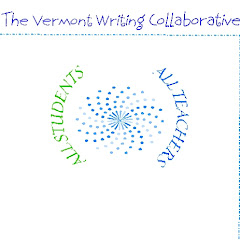Next Steps for Building Knowledge (Deepening Understanding):
A Collection of Activities for Nonfiction Articles for Grades 5/6
Some of my students are quick to read text, but do not process the content in enough depth to be able to write effectively about it. They often produce pieces that lack effective elaboration. Given a small group of 4-8 students for whom building knowledge is a challenge, I would consider some of the following mini-lessons in a mini-unit. This sequence of lessons would perhaps take place over two weeks, but may need to be repeated. It is the intention of this sequence to help students realize that it is important to fully understand a text before you can write about it. The examples given here are based on the following article, but many of these activities could be applied to other nonfiction articles:
“ Tiny Invaders,” National Geographic Explorer, November-December, 2006
Focus Question: How Does Your Body Keep You Healthy?
- Have the group read the article independently. Meet with the group and discuss the group’s understanding of the article. Ask the group members what part of the article they can explain to the group. Do they believe that they really understand the article and could write about it? Ask them to answer the focus question. Explain why we will be doing some activities to help deepen their thinking about the ideas in the article before they try to write a report that answers the focus question.
2. Discuss questions that are designed to activate thinking:
What causes sickness?
Once we are sick, why don’t we stay sick?
If Johnny gets sick, why doesn’t Joey or Susan?
What makes a sick person get healthy?
3. Develop understanding of the content vocabulary.
Sketch the content vocabulary
Build a game with the vocabulary: bingo, concentration, etc
Define a word. Have the group members identify the word.
Play “Is my definition true or fake?”
List some words. Have the kids find them in the text and define them in their own words: trigger, stowaway, swell, protect, germ-fighting, armor, invaders,
antibody, germ, virus
Write a dialogue of an interaction between various components of the immune system
Content Vocabulary:
skin immune system global warming bacteria
germs antibodies parasitic bugs: ticks and mosquitoes
virus vaccine oil gland dermis, epidermis sweat gland
4. Building Knowledge (*See attached graphic organizers)
Reread the article. Then fill out one or more graphic organizers or other instructional tools. Provide assistance if necessary. Help the group understand the importance of getting ideas onto paper so that there is room in their working memory for thinking about writing.
*Paraphrase the main idea(s) of each section
*Identify key ideas and supporting details
Pair share any of these activities
5. Focusing Understanding
Identify main ideas that relate to the focus which will become the points
Sketch the main ideas that relate to the focus
Pair share any of the above activities
main ideas: **critical ideas for body points
Germs travel.
Warm weather causes germs to spread.
**Viruses and bacteria sometimes get into your body and sometimes don’t.
**Immune system has antibodies that that destroy germs.
**Vaccines help your body make antibodies.
- Formative assessment: Don’t move on until the group is ready.
Observe the group’s understanding of the vocabulary
Assess the graphic organizers and other instructional tools
Confer with individual group members to assess their understanding
Give the students a quiz to assess their understanding
7. Final projects
Have the group members use graphic aids to write a report.
Consider writing the report by jigsaw. Split up the work. Have members
make suggestions about each others work.
Interview the students about their understanding of the focus question

Hi Bonnie, It is clear that you have indentified two reading comprehension strategies: Paraphrasing and main idea in order to focus students on their reading assignments. The groups (4-8 students) seem large to me as I have had better luck in smaller group, but I believe that depends on the individual students and how well they process within large groups. The important of finding ways to process content information is a huge task in 5/6 grade, so I believe you're on the right track. You have provided the students with multiple question to guide their performance, and their ability to respond in writing to the information you find important for them to master.
ReplyDeleteHi Bonnie,
ReplyDeleteI think you have chosen a very important skill to work on. I think many kids (and adults) become proficient skimmers (which is another important skill) but never learn processes for digging deeply into rich texts. I like how you have identified some of the key components of comprehension (vocabulary, main ideas, free working memory) and created activities designed to support each component. I also think it's great that you included a "check-point" that you won't move beyond until students are ready. That almost seems like it could be a helpful addition to any lesson plan. "When I've done A, B, and C, what exactly do kids need to know before I go on???"
I'd be interested to hear how it goes!
Hannah